There’s nothing quite like the feeling of accomplishment when a farmer gets to harvest fruit from their garden.
After investing a lot of hard work and effort, you get to benefit from the fruits of your labor.
But don’t take for granted that you will achieve this if you do not protect your trees from the birds.
You may not realize this, but the fruits in your orchard are equally appealing to birds as they are to you.
Therefore, you will need to employ some preventive and deterrent strategies such as nets, decoys, and alternative food sources, etc., so you can get your harvest. Ideally, you would want to use a combination of strategies at the same time.
Continue reading to learn about the best strategies for keeping birds off your fruit trees.
Use Fine-mesh Netting to Cover Fruit Trees
Nets are a great way to prevent birds of all sizes from damaging your fruit trees.
The nice thing about nets is that they are easy to install, all you need to do is drape the netting over the fruit tree’s canopy.
With the weight of the netting, it will rest on the branches and keep the birds from eating the fruit.
This is ideal for plants like berries and cherries.
Alternatively, you can frame out your plants and drape the net over the frame.
This allows you to get under the netting when it’s time to pick.
In addition to birds, fine mesh is also good at keeping rodents like rats and squirrels away from your fruit trees.
Invest in Reflective Flash Tapes

Reflective flash tape deters birds from invading your home orchard.
It works well for apple and cherry trees.
As the birds begin to approach your fruit farm, the shiny surface of the tape confuses the birds and urges them to fly in a different direction.
On the downside, reflective flash tape only keeps the smaller birds away.
Keep in mind – reflective flash does not protect your fruits and vegetables from other invaders like raccoons, squirrels, or other larger bird species. Plus, it is not esthetically pleasing and does not cover the entire tree.
Use Pie Tins

Even though many consider them outdated, pie tins can help solve the bird problem on your fruit farm.
They are a versatile deterrent because they both reflect light and make noise that birds find distracting, preventing them from perching on your fruit trees.
Best of all, you can suspend them from a fishing line for the best results. If possible, this should be at the entrance of your orchard.
The reflection and noise will easily deter the full variety of birds, including large birds from attacking your fruit trees.
The biggest downfalls of pie tins are also their biggest benefit. The noise can be really irritating if your garden is too close to your house.
Paint Eye Balloons
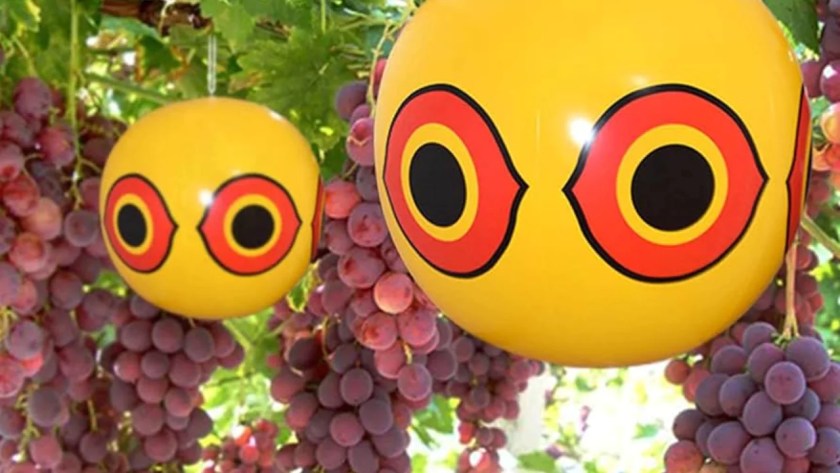
As the name implies, these are ordinary balloons with painted eyes.
You hang the balloons from fruit bushes and canes.
Although to a person these look like merely random decorations, birds will think they may be an animal threat.
This method is similar to the scarecrow, perhaps the oldest and most trusted means of moving birds and other pests off a farm.
That said, although eye balloons are inexpensive and easy to set up, they have their disadvantages:
- They are unattractive to look at.
- You may need to replace the fragile balloons often.
Install Strobe Lights

You really don’t need to be susceptible to photosensitive epilepsy to feel the extremely annoying effect of strobe lights.
Like humans, birds, and other animals that may be attracted to your orchard, can find these lights disorienting.
This is especially true of nocturnal fruit foragers like birds.
Strobe lights can be very effective because they are able to illuminate large areas.
But they are extremely disorienting to the person operating them. Use of goggles is required.
And it gets worse: donning the goggles at night can rub neighbors the wrong way. You also need reliable power for this deterrent to be effective.
Use a Decoy Predator
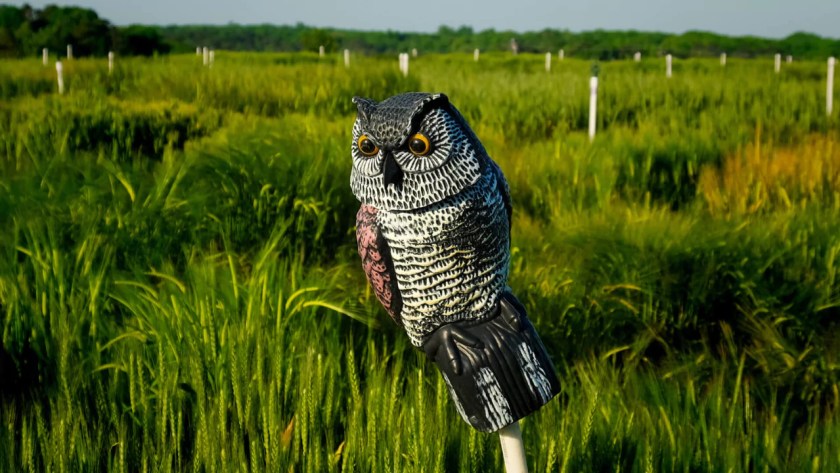
In a similar fashion to the scarecrow, using decoy predators is a good method for protecting birds from your orchard.
Although more expensive than some of the other methods outlined in this guide, decoy predators are a good method for birds and species that are known to fear Eagle, Hawk, and Owl predators.
It is important to note that decoys may not be as effective at preventing larger birds and rodents from consuming fruit on your orchard.
Additionally, smaller birds may ‘learn’ that the decoy remains unchanged in location if it is not alterated regularly.
Playing Distress Sounds
A different novel solution for deterring birds from your fruit is to broadcast distress calls of other birds.
In this instance, you will have to place speakers in specific locations around the farm. Then you can play the recordings, on timetables throughout the day.
An example could be to play the sound of smaller birds like a couple of weaverbirds, whenever they identify a hawk, or any other potential threat.
On a down note: You need reasonable investments to establish speaker stations and (speak to) and protect the equipment from the elements. Additionally, the speaker and other equipment will have to be moved regularly.
Use Miniature Windmills or Pinwheels

The spinning blades of windmills or pinwheels create a whirring sound that can be very effective to deter the smaller species of birds that are after your fruit farm.
Interestingly, these birds will confuse the sound and vibrations for possible predator movements.
Mount the pinwheels or windmills on masts that are 6 to 10 feet tall.
The blades of the pinwheel or windmill should be metallic and painted in some reflective color so that the loud sounds and bright reflections can work together.
And more importantly, you must move them often to prevent the birds from becoming accustomed to them.
The biggest disadvantage to things like windmills and pinwheels is that you must have a large amount of them, especially if you have an orchard that extends a long way.
Offer an Alternative Source of Food

Why presume that all the birds damaging your orchard only feed on fruit?
You do have the option of supplying these avian marauders an alternate food source if you would prefer not to rely on nets, strobe lights, tape, or any of the mentioned techniques above.
For example, purchase a suet feeder or another bird feeder that supplies bird seeds to lure away the birds from your fruit trees.
The best part is, you can appreciate the birds.
Still, the newly created food source may not be enough, and the birds may eat both your newly created food source and the fruits.
Which Bird Species Eat Fruit?

Birds that primarily eat fruit are called frugivores.
That being said, many birds consume fruit in addition to other feed types.
Here are some birds that are known to eat fruit regularly:
- Catbirds
- Orioles
- Robins
- Thrashers
- Thrushes
- Waxwings
- Woodpeckers
Apart from these fruit-eating animals, kinglets, quail, sparrows, titmice and towhees are other species that occasionally eat a fruit diet.
This happens when fruits are abundant, or when alternative types of food are rare.
In the tropics, toucan, and parrot species can occasionally eat diets consisting predominantly of fruit.
What Fruits do Birds Eat?
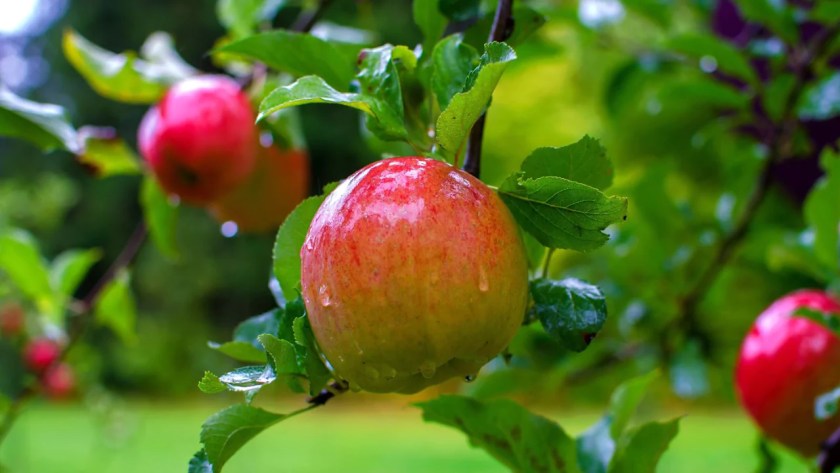
Any fruit that people eat is safe for birds.
Birds also consume fruit that is inedible for humans.
Examples of fruits that birds eat include:
- berries
- cherries
- oranges
- apples
- plums
Birds typically consume the entire fruit, including the seeds. These seeds, passed through the bird in feces, have the potential to regenerate a new plant in a new habitat
When it comes to larger fruits, most birds will eat them in small bites.
Some birds will only drink the juice from watery fruits such as oranges or plums to avoid eating the rest of the fruit.
Birds can eat unripe fruit, while others can eat fruit after it has fermented for a long time.
Even though birds can consume fermented fruit, feeding often leads to death due to the alcohol concentration after consuming a relatively large amount of fermented fruit.
How Do Birds Benefit Trees?
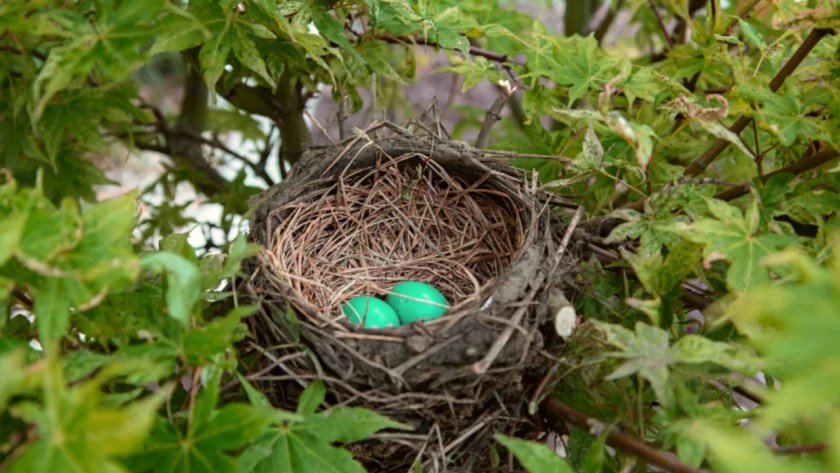
It is indisputable that trees greatly benefit birds.
As showcased above, they can use your fruit trees for food.
Nestlings also require trees for:
- shelter
- breeding
- and feeding
Regardless, they create nests or utilize nooks in their habitat as a home, nectar for food, and the flora as nurseries.
Trees, interestingly, can also benefit from birds. The relationship of these two organisms is symbiotic.
So here’s a reason you may want to ease up on your efforts to keep birds from frequenting your farm site.
Pollination

Pollinators are bird species, such as hummingbirds, orioles, sunbirds, and others, that transfer pollen grains from one flower to another.
Pollination is the first step in a plant’s cycle of reproduction.
Fertilization occurs when pollen grains from the male flower meet pollen grains from the female flower.
Without some bird species, some trees would not reproduce because they depend entirely on birds for pollination.
Did You Know? It is a combination of the attractive smell and bright colors of any blooming plant species that attract pollinators. Fruit-bearing plants exude nectar, and many bird species are attracted to sweet nectar.
Seed Dispersion
Seed dispersal is a crucial natural mechanism that allows seeds to be moved from the parent plant to other locations.
This allows plants to distribute their genes across a diversity of ecological locations.
The purpose is to allow plants to germinate in areas that do not compete with the parent plant for vital nutrients.
Most birds are engaged in seed dispersal by the following means:
- To begin with, the seeds could become lodged on their feathers while the bird feasts on the fruit. The seeds probably fall off when the bird flies away.
- Next, when the birds are feeding on fruits, the seeds that the bird swallowed will come out through their feces since it is undigestible.
This way, birds unwittingly transfer seeds to areas where they can thrive.
Insect Regulation

Insects like aphids, beetles, crickets, locusts, etc. can be more than just a nuisance, they can severely damage your plants either through infection or through feeding.
Even worse they can carry human diseases.
Ultimately, the time and input that you enjoyed investing into maintaining your orchard in pristine condition is wasted by damage caused by insects to trees that cannot be repaired.
If you are one of those people that don’t like to rely on insecticides or any other chemical-based control mechanisms, you will be pleased to know that birds can be an ongoing solution for insect distress.
Through Experience: Having birds around is organic, proven, and reliable way to prevent insects. Many birds consume insects and therefore provide protection for you and your plants.
Controlling Weeds

Just as invertebrates are a mite to any farmer, so too are weeds.
These nuisance crops are unsightly and detrimental to plant growth. Oftentimes, left unchecked, they’ll stall the ripening of your crop.
Weeds harm your plants by competing for the little soil nutrients in the area with limited space.
They insure that your crop also does not receive sufficient moisture, sunlight, and room for growth.
When infested with weeds, a crop may require uprooting in order to eliminate the invasive weeds.
Fortunately, you can use birds to keep the population of weeds on your farm in check. Certain birds, including blackbirds, crows, and sparrows will feast on weed seeds.
This both saves time and labor for weed control.
Most importantly, you wont be exposing your crop to chemicals common in herbicides.
Soil Fertilization
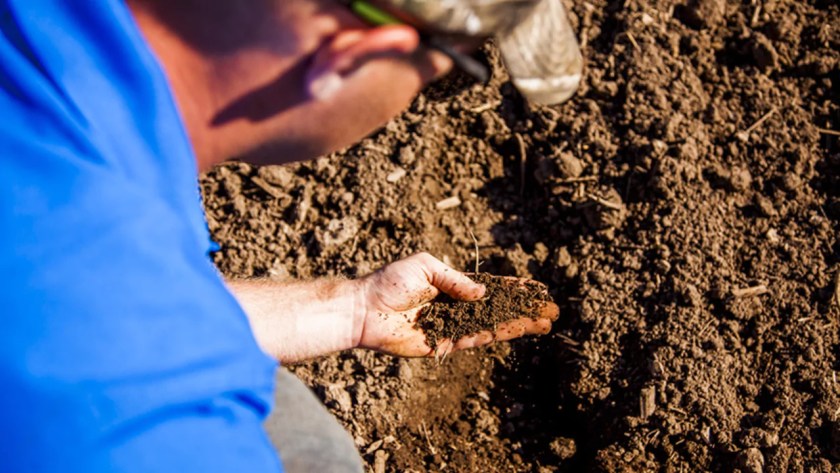
As offensive and odorous as it may be, bird excrement is a high-quality nutrient source for plants on your farm.
Bird droppings contain nitrogen and phosphorus, two nutrients that can help create compost into organic fertilizer.
It is not a coincidence that trees grow faster in areas with high numbers of birds.
Wrapping Up
Especially after an exhausting few months of effort, it can be challenging to be altruistic with your harvest.
However, it’s nearly impractical to achieve this because of flight and the methods discussed previously, will only fail us in some combination.
One good thing is that birds will not typically impact your orchard that much, in fact, they are quite helpful.
However, it is important to assess, and weigh the good with the bad that birds bring to fruit farming. Birds give a variety of benefits including pollination, seed dispersal, and insect and weed seed predators which increases available nutrients to your soil.
So striking a balance of the benefits and harm is the name of the game when it comes to birds in fruit farming.
Aggressive deterrent methods such as strobe lights, or a constant false distress call, should be avoided as they are too disruptive to a normal balance of relationships in your orchard.
Instead, utilize decoys and other food sources for birds, while still managing fruit allocation, which might only require certain pieces of fruit or fruit that was dropped in assessments.
In doing so, each farmer could help promote the potential for symbiotic relationships between birds and fruit in their orchard.